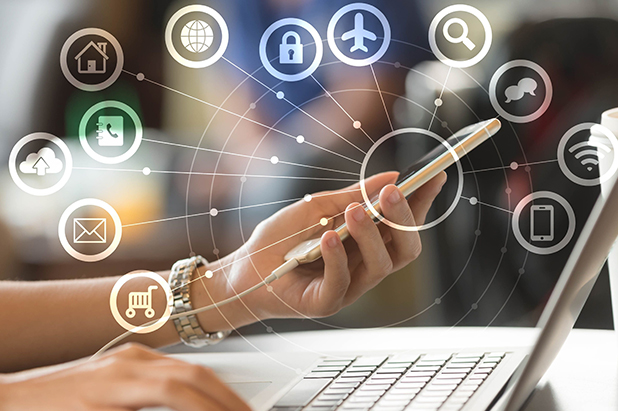Studies suggest that by 2025, there will be 75.4 billion IoT devices and the global worth of IoT tech will be $6.2 trillion!
With billions of devices in the system, one can only imagine the amount of data the whole ecosystem will generate. The most ubiquitous form of connected devices are smart devices like laptops tabs and smartphones. The IoT has arrived and has moved much beyond just a fancy buzzword. Companies around the world are taking initiatives to build or implement some or the other IoT solutions. An IoT solution typically comprises of physical devices or sensors which capture data and a network to store the data in an IoT hub. The data is then analysed to derive actionable insights to help businesses in strategy, operations optimisation, customer experience enhancement, and innovation.
IoT is more than just Sensors
Contrary to popular belief, IoT is not just sensors. It is a whole ecosystem, through which, data as well as monetary transactions are taking place. It is an ecosystem that knits companies, vendors and the customers with each other. Along with all the devices, it needs connectivity and gateways to port the data into the storage layer. The advent of cloud technology has made it possible to store a huge amount of data economically. There is a need for a user-friendly and intuitive UI to enable users to interact with the data and understand the insights. Lastly, all this data is rendered useless if there is no way to derive insights from it. The nature of data flowing through the system is unstructured and hence a lot of cleansing, scrubbing is required to make it ready for analytics. Companies are implementing machine learning algorithms to draw actionable insights from this clean IoT data.
Big Data & Analytics
Big data, as a concept, has been around for a long time. It consists of the five 5 Vs (Volume, Veracity, Velocity, Variety, and Value). All these are the characteristics of the IoT data as well, which needs to be analysed and examined to enable organisations to become data-driven enterprises.
The Connection between IoT and Analytics
One can logically conclude that coupling analytics with IoT ecosystem is a win-win situation. Let us look at the advantages the two together can bring to the table.
- Quickly analysing the huge clusters of IoT data in tandem with the real-time data becomes easier with data analytics – only when analysed, IoT data can provide business value.
- Analytics tools are important to clean scrub, de-duplicate, and index the data to make it analytics-ready.
- Analytics can unearth patterns and anomalies primarily undetected by the naked eye, and provide insights to organisations – these insights can drive revenues, new product development, employee engagement, customer satisfaction, and innovation, etc.
By combining IoT with analytics, enterprises can gain a competitive advantage.
Types of Analytics
Let us further deep dive into various types of analytics happening in an Analytics environment.
- Streaming Analytics. This kind of analytics is of extreme importance in the fields of aviation, finance, traffic control, etc. Real-time sensorial data streaming is analysed and used to identify immediate or urgent needs. This can be used to avert airline disasters, fraudulent transactions, or traffic jams during rush hours.
- Spatial Analytics. One strong use case of this is the timely identification of growth of diseases like swine flu in different geographies and understanding how it can be predicted and thwarted.
- Time Series Analytics. Weather forecasting using time series analytics by studying satellite feed can help in predicting the shifts and inclement weather. This helps government agencies take proactive actions and avoid disasters or be better prepared for those in case of any natural calamity.
- Prescriptive Analytics. Predictive maintenance of equipment and asset utilisation based on the IoT data feed is a reality. The health of every component is monitored to prevent a breakdown or a shut down even before it occurs. It can help save a lot of cost for the organisation by preventing unexpected outages.
Industries Transformed with IoT and Analytics
- The manufacturing industry has seen a transformation with IoT and analytics –remote asset monitoring, predictive maintenance, inventory management, supply chain optimisation, better plant safety, customer experience enablement, the opportunities are plenty. Larsen and Toubro construction, for example, uses the power of IoT and analytics to predict and prevent shutdowns leading to better utilisation and monetisation of assets.
- Retailers are also not behind. They are using ibeacon data to modify the store layouts. IoT data has also fueled supply chain analytics helping eCommerce companies optimise their supply chains.
- IoT data is being leveraged in the Oil and Gas industry to predict what is the likelihood of finding oil.
- In healthcare, wearable data is fueling another stream of analytics which is being leveraged to monitor vital signs and notify patients if they feel something serious is about to happen.
This explosion of IoT and the data volumes related to it has given rise to great expectations. I am sure organisations will soon be taking serious efforts to adopt and exploit this opportunity and ride the IoT tidal wave.




